When people who live in temperate latitudes find themselves in Spain in the summer, they are not ready to waste time on an afternoon nap. They want to sunbathe, have fun in water parks, go on excursions and drink cold wine on the summer terrace of cafes.
The resort infrastructure is diligently adjusted to the guests: shopping and entertainment centres, cafes, and restaurants work without breaks. But small shops and museums in resort towns tend to close in the afternoon.
It is so Spanish — to put off all the fuss for a couple of hours, take a nap in the cold, and revive for fun and gatherings with friends in the evening. Doctors advise you to adopt this habit if you visit Spanish resorts in July.
Kidpassage review will tell you how to have a holiday in Spain without harming your health, which resorts to choose for a family trip and what to do besides lying on the beach.
Contents
- Holidays in Spain in July: pros and cons
- The weather
- Air and water temperature
- Beach holidays
- Costa Brava
- Costa Dorada
- Costa Blanca
- Costa de Almeria
- Costa del Sol
- Mallorca
- Tenerife - Tour programme
- Entertainment for children
- Holidays, events and festivals
- Cost of vacation
- Shopping
- Tips for parents
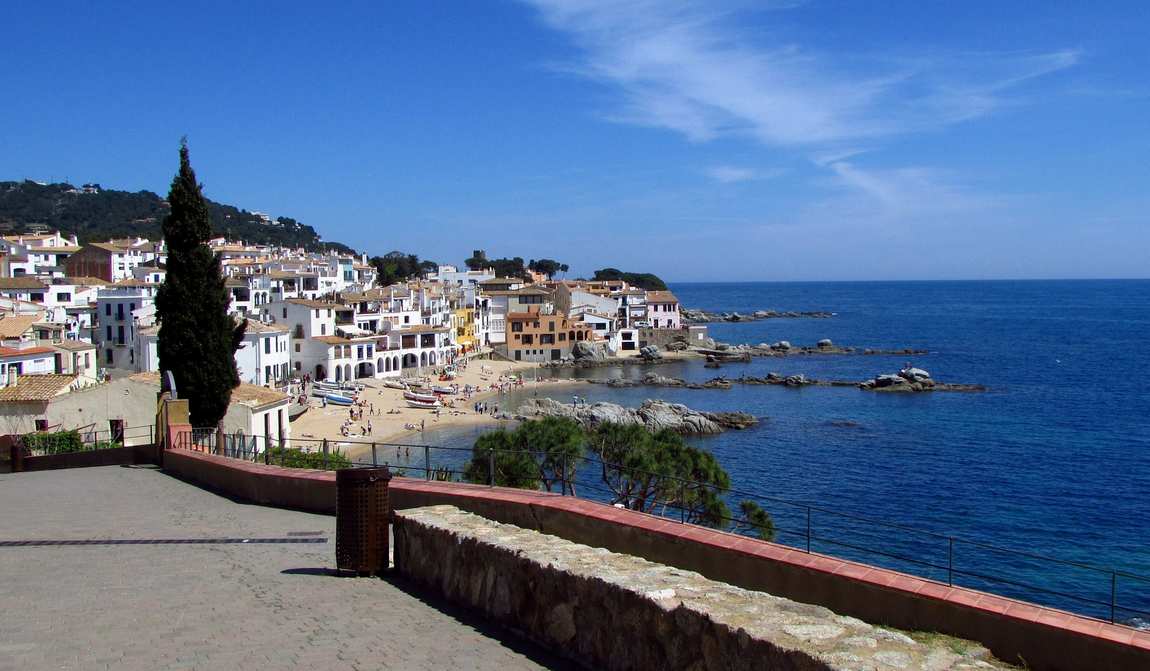
Holidays in Spain in July: pros and cons
Sunny May is over, warm June with cool seas is over, and it's time for the real heat. Spain in July forgets what gloomy weather and rain are: the sun shines relentlessly, and only a light sea breeze can soften the heat.
But at the same time, many people consider mid-summer an excellent time to holiday in Spanish resorts. In a way, it is:
- the sunny weather is a joy for those who like to bask on the beach;
- the sea gets so warm that children do not want to go ashore at all;
- tourism infrastructure is used at full capacity;
- the prices of local fruit and vegetables fall;
- summer sales start in July.
Despite the praising reviews about holidays in Spain in July, we still note a few significant disadvantages:
- aggressive sun forces you to plan the day so as not to be outside from 11:00 to 16:00;
- not all children quickly adapt to the hot climate;
- sea resorts and major cities are overcrowded with holidaymakers;
- prices in hotels and restaurants increase significantly.
To avoid exposing your children to the heat, we recommend choosing Costa Brava and Tenerife holiday regions. To find out where to holiday in Spain in July, whether it is realistic to find a secluded beach and whether there are good restaurants with low prices, read on in our review.
The weather in Spain in July
"Stable, unrelenting heat, clear, no precipitation" — that's what the Spanish weather forecast for July and August might sound like. And it doesn't matter whether the thermometers show +28°C or +36°C today; everyone quickly realises that you shouldn't go to the beach without water, a hat and sunscreen, and in the heat of the day, it's best to stay close to the air conditioning.
The weather in early July rarely does without strong heat, and the sun does not hide all month.
The sea is warm enough from June, but it can warm up a couple of degrees more by August. There is nothing new to add about the weather in Spain at the end of July. Up to the very end of summer, the heat will not decrease, and if you do not tolerate high air temperatures, it is better to postpone your trip to September. And for those who are going to Spain in July with a child, we suggest learning more about the weather and how not to harm yourself in the heat.
Air and water temperature
If you try to imagine Spain's Mediterranean climate, you'll picture high skies, bright sunshine, blue sea and a white strip of beach. Everything is generally correct; only in July is it accompanied by a tiring heat. We have collected data on air and water temperatures in several popular Spanish cities.
| Destination | Daytime | Nightime | Water |
| Madrid | +33,3°С | +22,4°С | - |
| Barcelona | +28,4°С | +22,1°С | +24,3°С |
| Valencia | +30,7°С | +23°С | +25,7°С |
| Malaga | +32,3°С | +22,4°С | +22,3°С |
| Mallorca | +30,9°С | +22,5°С | +25,7°С |
| Tenerife | +25,1°С | +18,6°С | +23,7°С |
| Lloret de Mar | +28,4°С | +20,8°С | +23,7°С |
The temperature in Spain in July is a challenge even for those who love the heat. The heat is easier to bear on the seaside, with low humidity and a refreshing breeze blowing. But in Madrid, Seville and other cities far from the sea, the air can get as hot as +40°C.
The Costa Brava, Spain's northernmost region on the Mediterranean coast, is coming into its prime. When temperatures are above +30°C everywhere else, it remains moderately warm.
The water temperature in Spain in July is pleasant almost everywhere, only in Tenerife, where the season starts in autumn, and in Costa del Sol, where cold currents from the Atlantic reach, the water does not get warmer than +22-23°C.
Beach holidays
Spain's beaches are not like each other, and they have only one thing in common — well-maintained and clean. It is not without reason that every year hundreds of beaches in this country receive the "blue flag" for compliance with environmental standards, safety and coastal infrastructure. Spain additionally confirms the level of service on the beaches with the Q mark.
The entrance to any beach is free of charge; if you wish, you can spread your towel on the sand or rent a sunbed and sun umbrella.
As for the diversity of beaches is a huge plus: here you can find places for active rest, huge beaches in the centre of the cities, a quiet coast outside the resort, and small coves. It is difficult to find only empty beaches — in the middle of summer, crowded everywhere.
Where to go in Spain in July? At least one of the resort regions will suit you on all parameters.
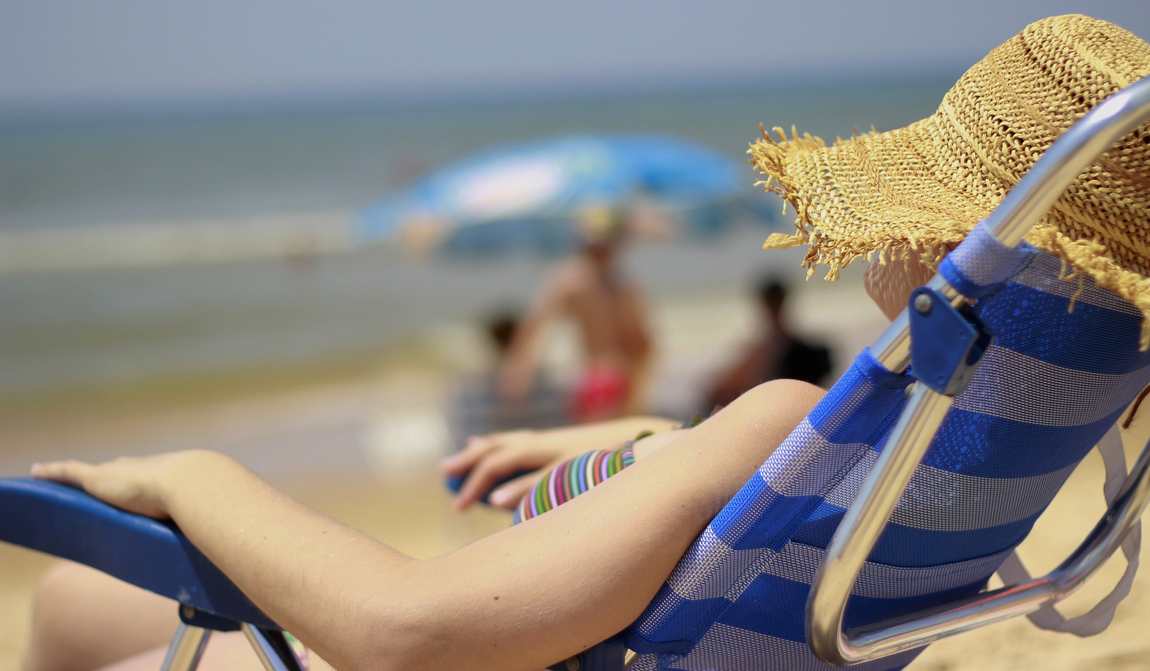
Costa Brava
Summer comes to the northernmost Mediterranean coast of Spain late, but in early July, there is already a natural grace here. Daytime temperatures are between +25-30°C; nighttime temperatures range from +18°C to +23°C. Combined with a light breeze (its speed does not exceed 3 m/s) and an almost complete absence of rain, it is perfect weather for beach holidays.
But the sea in the Costa Brava resorts can be cool in the middle of summer. There are years when the water warms up only to +22-23°C, but often the sea warms up to +24-25°C.
A few July days can be cloudy or overcast; a couple of times a month, there are short rains.
The sandy beaches of Lloret de Mar, Blanes, L'Estartita and Playa de Aro are most suitable for holidays with kids. Some beaches have free children's clubs. Roses is famous for its windsurfing centre.

Costa Dorada
"The Golden Coast" in July does not dream of coolness. During the day, the temperature rises to +28-32°C; at night, it drops to +17-25°C; rare clouds in the sky are a blessing, and there is no hope for refreshing rain. The situation is slightly saved by a wind of 3.5 metres per second.
But nobody complains about the sea: at the end of June, the water warms up to +24°C, and in June, the temperature sometimes reaches +27°C.
You should take place on the beaches of Costa Dorada from the very morning — it is both suitable for your health and a chance to get close to the water. The beaches of Salou and La Pineda are good for a comfortable family holiday, and for active holidays — Cambrils, where there are diving, windsurfing and sailing centres.
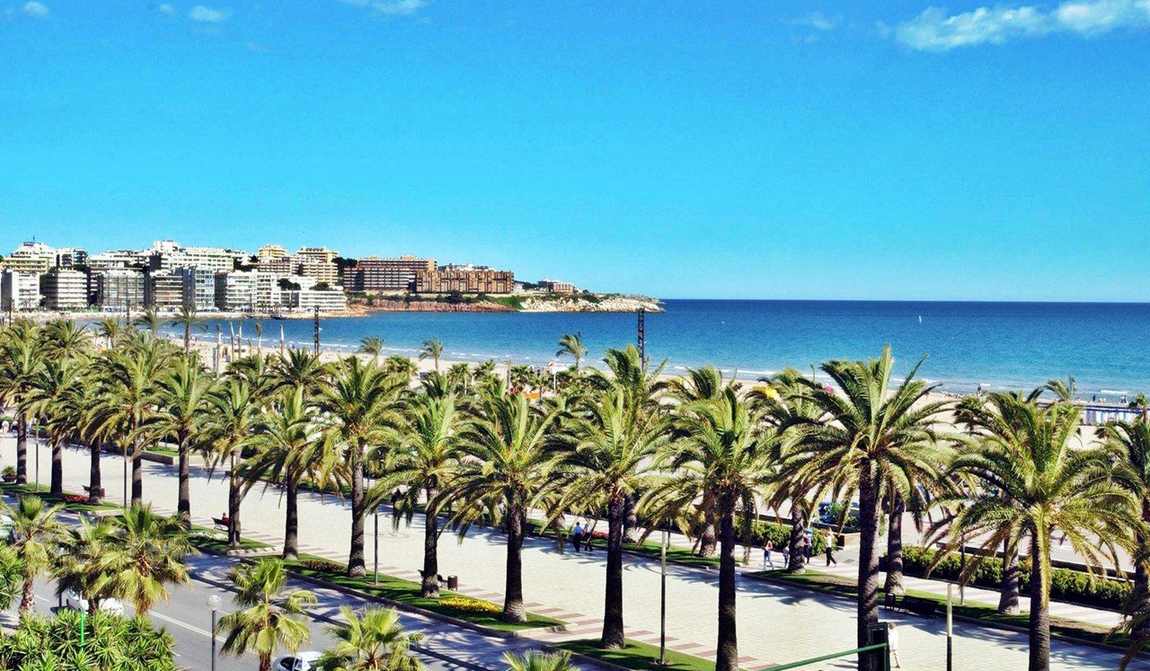
Costa Blanca
A heat wave of around +30°C, sunshine daily, one brief rain, a breeze of 3.4 metres per second and a luxuriously warm sea — that's July on the "White Coast". Here you will need only light clothes that protect you from the sun, and warm things are hardly necessary, as the night temperature does not fall below +20-25°C.
Most of all, you should take things for swimming: few people can sit on the shore when the sea warms up to +25-27°C. The beaches of the Costa Blanca in July are very crowded. The long coasts of Alicante and Benidorm are packed with holidaymakers, even in small towns such as Denia, Villajoyos and Javea.
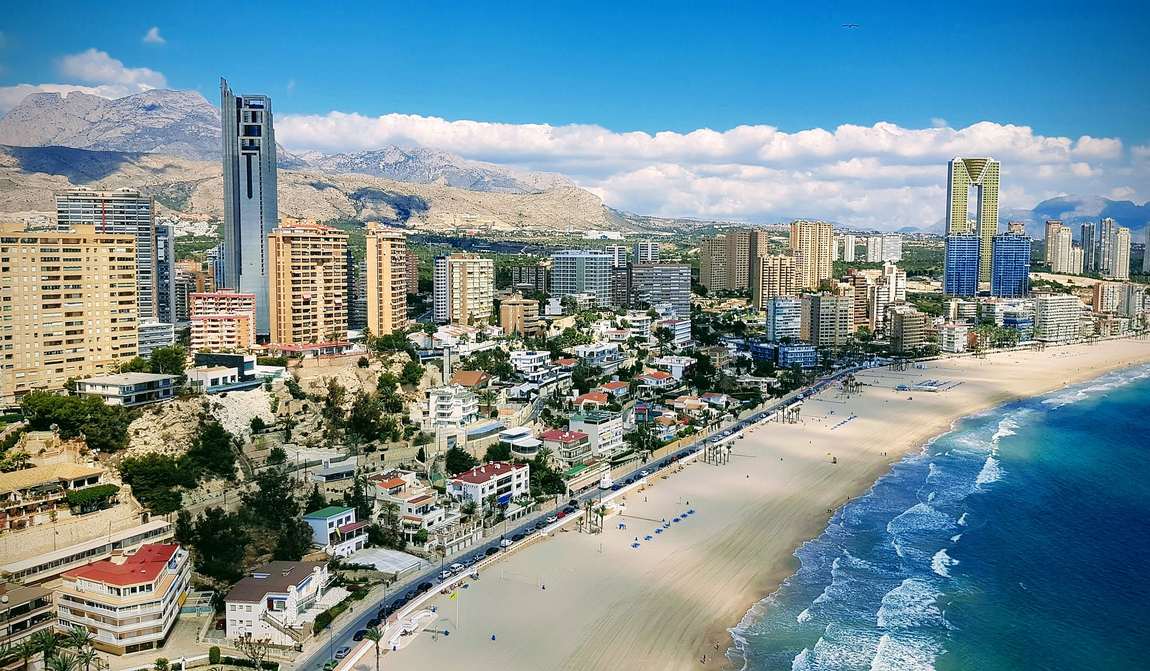
Costa de Almeria
Spain's least-known holiday destination in the middle of summer is definitely worth a visit. There are fewer people here than on the famous coasts, and the weather is pleasant, with sunshine and moderate heat. The daytime temperature stays at +28-32°C; at night, temperature drops to +18-25°C. There is no rain; the wind blows at a speed of 4 m/s (on hot days, it is pleasant), and the sky is clear — nothing will interfere with beach holidays.
But the main advantage of Almeria over the neighbouring Costa del Sol is the warm sea. On average, it warms up to +22-23°C, but in late July, the water temperature usually rises to +24-25°C.
The region's wide and spacious sandy beaches are convenient for family holidays. The beaches of Roquetas de Mar and Mojacara have children's playgrounds, so they are often chosen by families with little ones.
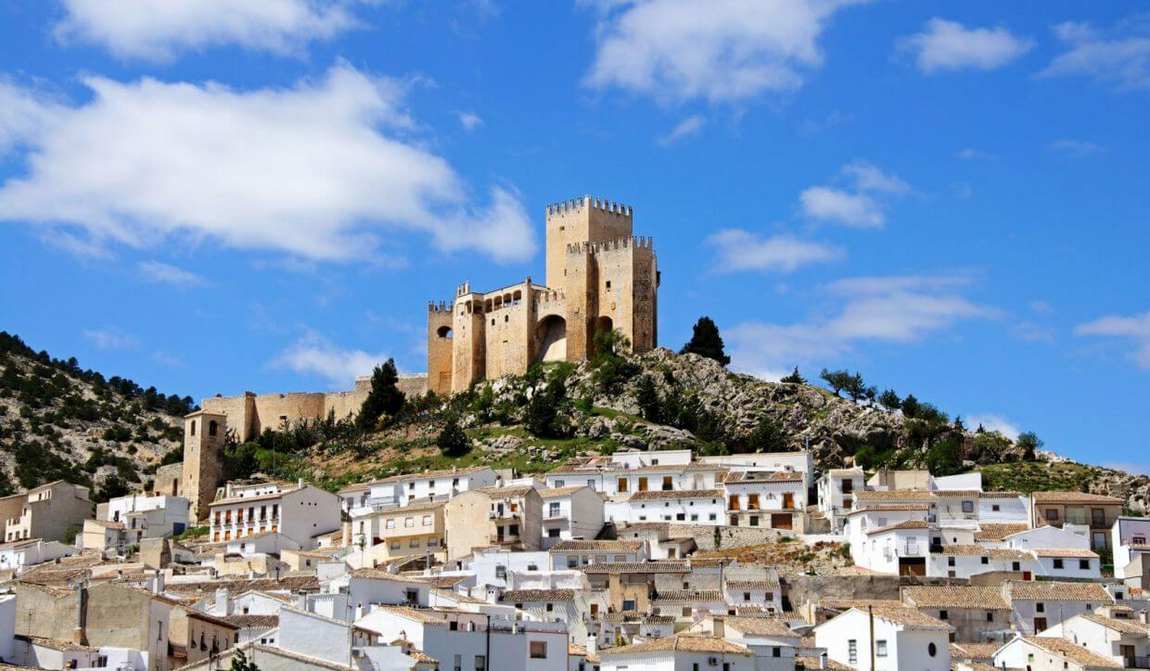
Costa del Sol
Tourists coming to Sunny Beach in July immediately appreciate the siesta. When there is not a cloud in the sky for the whole month, and the air is already hot from the morning up to +30-32°C, the hottest hours you want to sit in an air-conditioned hotel room. By evening the temperature drops to +22-25°C, and it already seems blessed coolness.
With such heat, the sea off the Costa del Sol is still cold. Atlantic currents do not allow the water to warm up to +21-22°C. It is a real gift if, in the middle of July, the water temperature rises to +23-24°C. The average wind speed on the Costa del Sol is 2.7 metres per second. There is no reason not to surf the waves on a surfboard in Marbella and Torremolinos.
As for beach holidays with children, any resort will please you with its well-maintained coastline and calm sea. Here you can look for exotics — for example, relax on the Malagueta beach in Malaga, where sand was brought from the Sahara.
And if you want your little ones to splash in the sea, choose La Carihuela Beach in Torremolinos, where the shallow waters are getting warm very quickly.
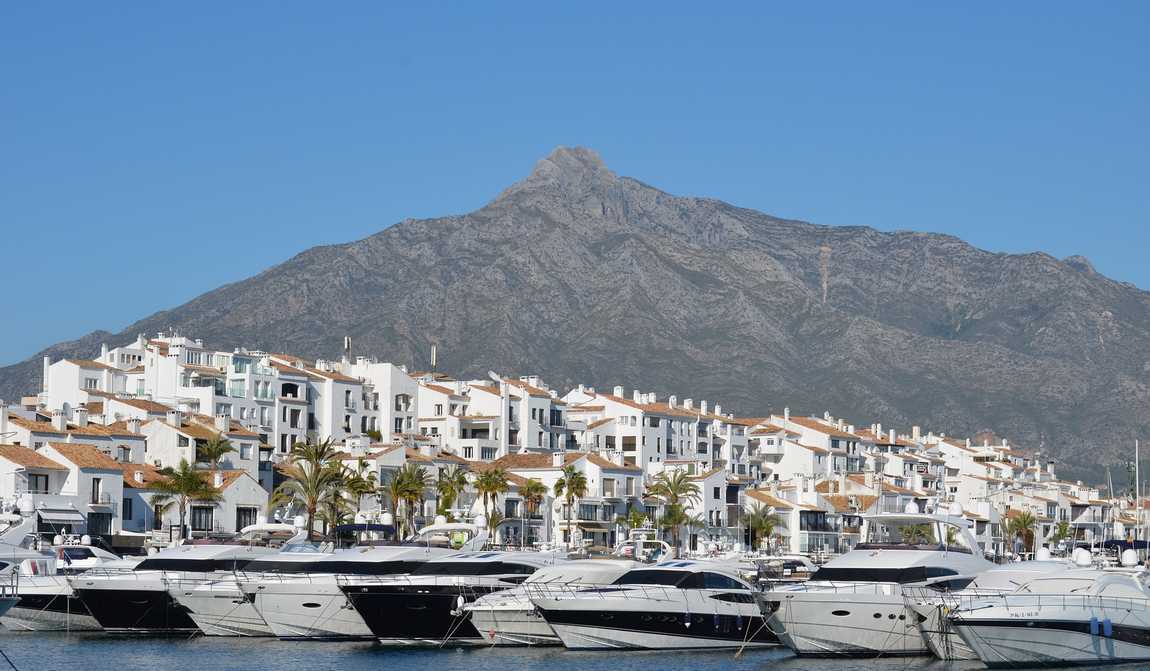
Mallorca
It's scorching on the Balearic Islands in July. During the day, thermometers show +30-35°C; at night, the air cools to +20-25°C. Of course, the sea warms up to +25-27°C at such air temperatures, and holidaymakers spend more time in the water than on the shore.
Other meteorological data will please lovers of good weather: no rain, no more than two cloudy days, average wind speed — 2.8 m/s. If you had to choose Mallorca resort because of the warmest sea at the beginning of summer, the water will become warm in all resorts by July.
The beaches of Cala d'Or, Magaluf and Palma Nova are less crowded than the main town of Majorca.
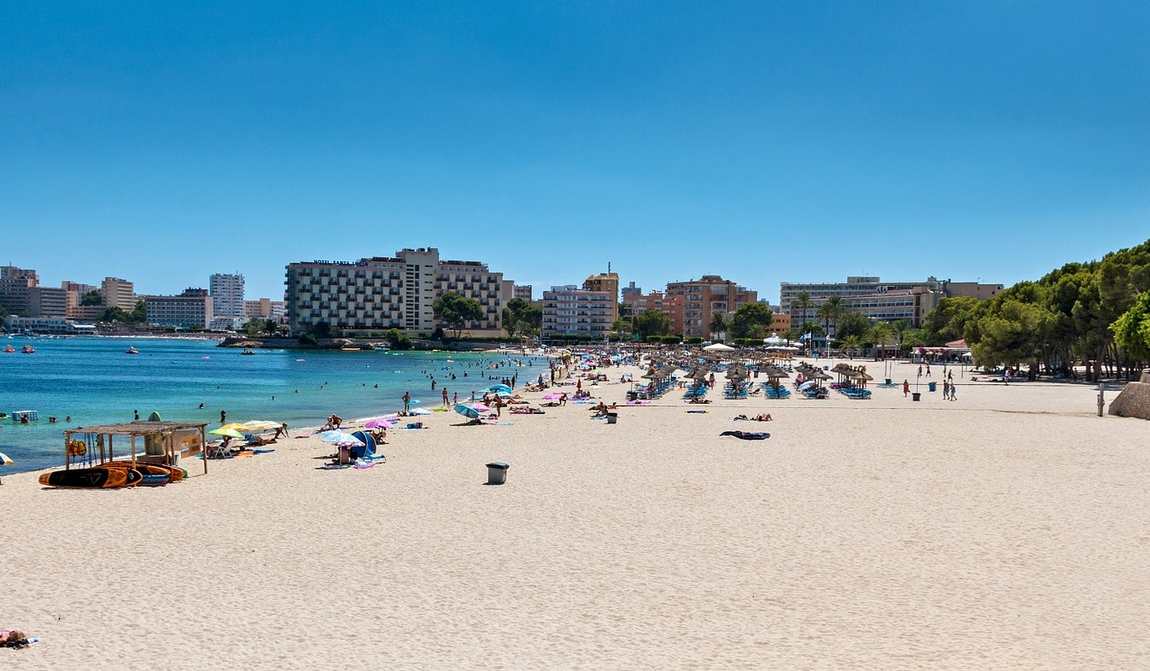
Tenerife
July weather in the Canaries is unpredictable. Midsummer can be like a warm spring when thermometers show +20-22°C during the day and +16-18°C at night. And sometimes, the temperature rises to +25-30°C, and then holidaymakers are eager to go to the beach. Not everyone swims even in the heat because the sea in Tenerife warms up only to +22°C.
But neither cloudy weather nor precipitation (one short rainfall does not count) will hinder your holidays. The average wind speed in Tenerife in July is 5.7 metres per second. If not swimming, sunbathing with children is best on the southern coast, where beaches abound with children's entertainment. These can be water slides, as in Las Americas, or playgrounds, as in Playa de Los Cristianos.
El Medano Beach attracts those who want to learn windsurfing or have already achieved some success in it.
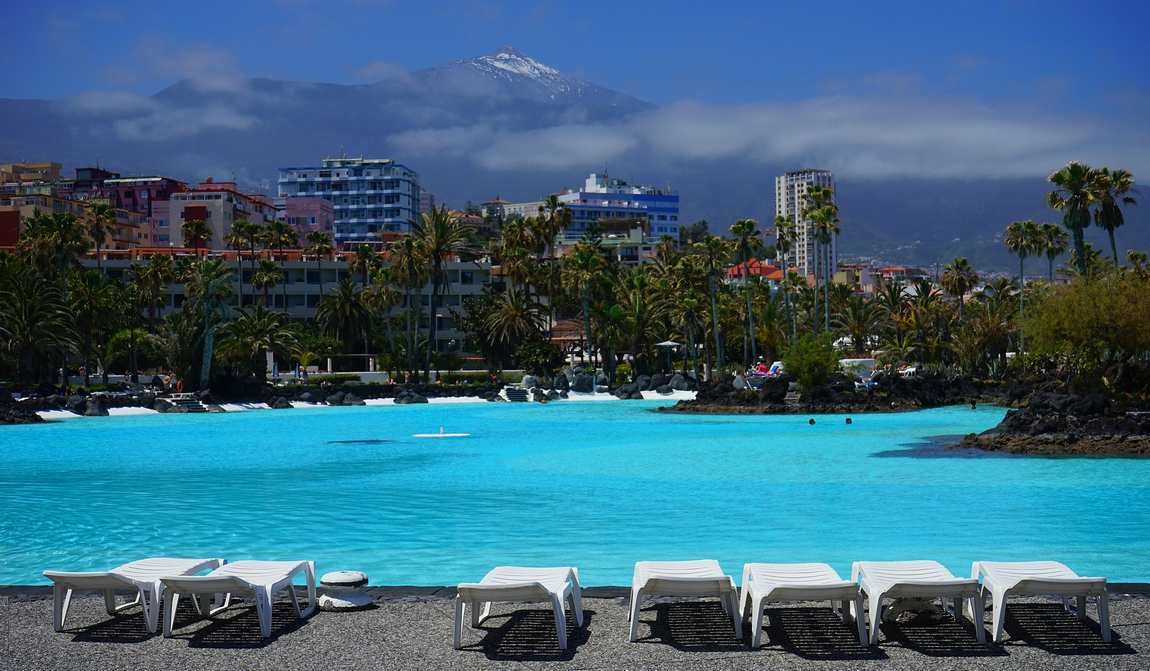
Tour Holidays
If you don't like to lie on the beach and want to see something new on every trip, supplement your holiday in Spain with a trip to a museum.
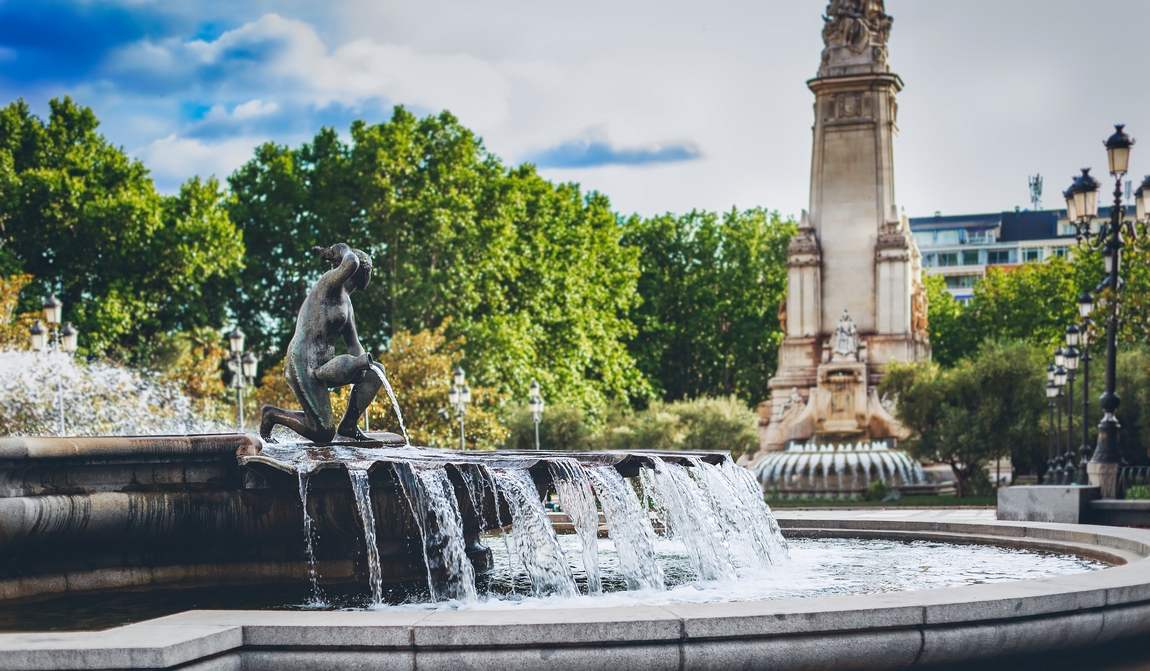
Open-air attractions are best explored in the less hot season, while the cooler halls of the museums are perfect for tours with children. Take at least a day to visit Oceanographic Park and the Prince Philip Science Centre in Valencia's City of Arts and Sciences. We recommend finding time to visit the Valencia History Museum — the ticket price is symbolic, and the modern presentation of information will fascinate even preschoolers.
In Barcelona, we recommend leaving Gaudi's creations for later and spending time at the Maritime Museum — its exposition is housed in the building of medieval shipyards.
But in the capital of Catalonia, there are many exciting things for children: interactive museums CosmoCaixa and Blau, the Wax Museum with children's halls, and the Barcelona Football Club Museum.
We do not recommend visiting Madrid in July. Even though the temperature is off the charts, the Spanish capital attracts an incredible number of tourists, and the Prado Gallery, Thyssen-Bornemisza Museum, and Queen Sofia Art Centre are always crowded.
If you still want to visit the famous museums, use the Madrid City Card, which does not require queuing.
There are also museums in seaside resorts — not as large as in big cities, but always unique. For example, in Alicante, there is a museum of bonfires, which tells about the feast of St Juan, and a museum of turrón.
Guadaleste has a museum of dolls' houses and a museum of microgiant: in its halls, you can see a bullfighting arena in the eye of a needle or a copy of El Greco's painting on a grain of rice. We recommend visiting the Museum of Magic in Santa Cristina de Aro.
There are several family-friendly museums in Málaga. Choose your favourite: Picasso Museum, Automobile Museum, Interactive Music Museum, Art and Folk Traditions Exhibition.
In Mallorca, a tourist bus will take you to Belver Castle, where the historical museum is located.
Tip: before the tour, check the museum's opening hours — in small towns they usually close for siesta.
Entertainment for children
Of all the variety of children's activities in Spain, summer makes you choose those that combine with the hot weather. A favourite pastime in Spanish resorts is relaxing in water parks. Every region has at least a couple of water entertainment centres. Here are just the biggest ones:
- Aqua Brava and Marineland in the Costa Brava;
- Aquopolis and Aqualeon in Costa Dorada;
- Aqualandia and Aquopolis in Costa Blanca;
- Aqualand and Mijas on the Costa del Sol;
- Aqualand and Western Water Park in Mallorca;
- Aqualand and Siam Park in Tenerife.
When the heat subsides in the evening, tourists move to amusement parks. Among the best are Terra Mítica in Benidorm and Katmandu in Mallorca.
But nothing beats Port Aventura Park in Salou, Spain's top family entertainment centre. It features dozens of mind-blowing rides, the huge Caribe Aquatic Park and the Ferrari Land theme park.
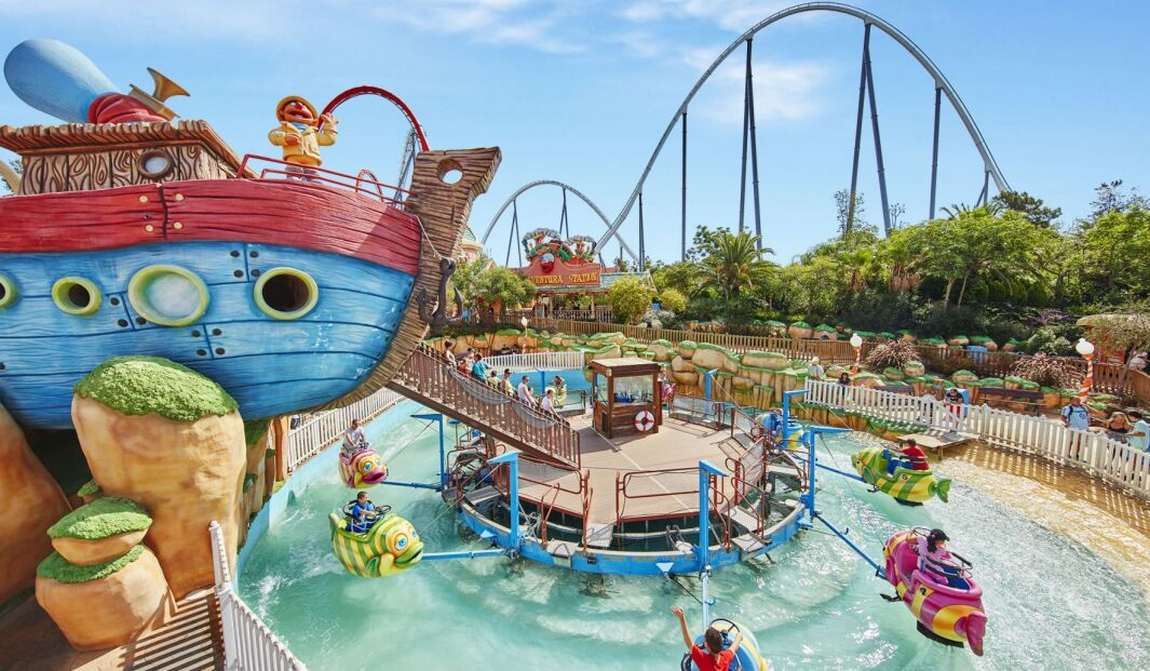
Meanwhile, in the heat of the day, it's more pleasant to be in the shade, amongst the greenery. For this, we recommend heading to one of the Costa Brava's luxurious botanical gardens, the Sama Park in the Costa Dorada, the Terra Natura and Mundomar animal parks in the Costa Blanca, and the Selwo Aventura Biopark and Park in the Costa del Sol. In Mallorca, you can escape the sun at the Alfabia Gardens or find a shady corner to watch the animals at Safari Zoo.
There are also places in the big cities where the heat is less noticeable. The best place to walk with children in Madrid is Casa de Campo Park; in Barcelona, the gardens on Montjuïc Hill; in Valencia, the Biopark and the Turia riverbed.
Well, the real coolness is to be found in the caves. One of the largest caves in Spain — Canelobre — is located near Alicante. The walking path stretches for a whole kilometre along it: stalactites and stalagmites seem to be fanciful sculptures in the artistic illumination. In the Font Major cave, near Tarragona, scenes of primitive life are reproduced.
And in the Nerja Cave in Mallorca, one of the underground halls has been transformed into a concert stage.
Holidays, events and festivals
A search for "holidays in Spain in July" will turn up several events, but you must leave the Mediterranean coast and head inland to participate in them. If you are not afraid of this, we suggest spending the second week of July in Pamplona, where the San Fermin Festival takes place. Songs, dances, fireworks, carnival procession — San Fermin is similar to all other Spanish holidays in this part of the festivities.
What makes it different is the encierro, running of the bulls through the city streets. There are many daredevils taking part, but there are thousands of times more observers.
If you do not want to get away from the sea, you can study the calendar of events in the province where you are going on holiday. For example, in Tarragona, on July 3-6, they organise a fireworks competition — its winner gets the right to organise a pyrotechnic show at the Santa Tecla festival in September.
In Valencia, La Feria de Julio, the July fair is held. On the last Sunday of the festival, platforms with arrangements of fresh flowers move around the city.
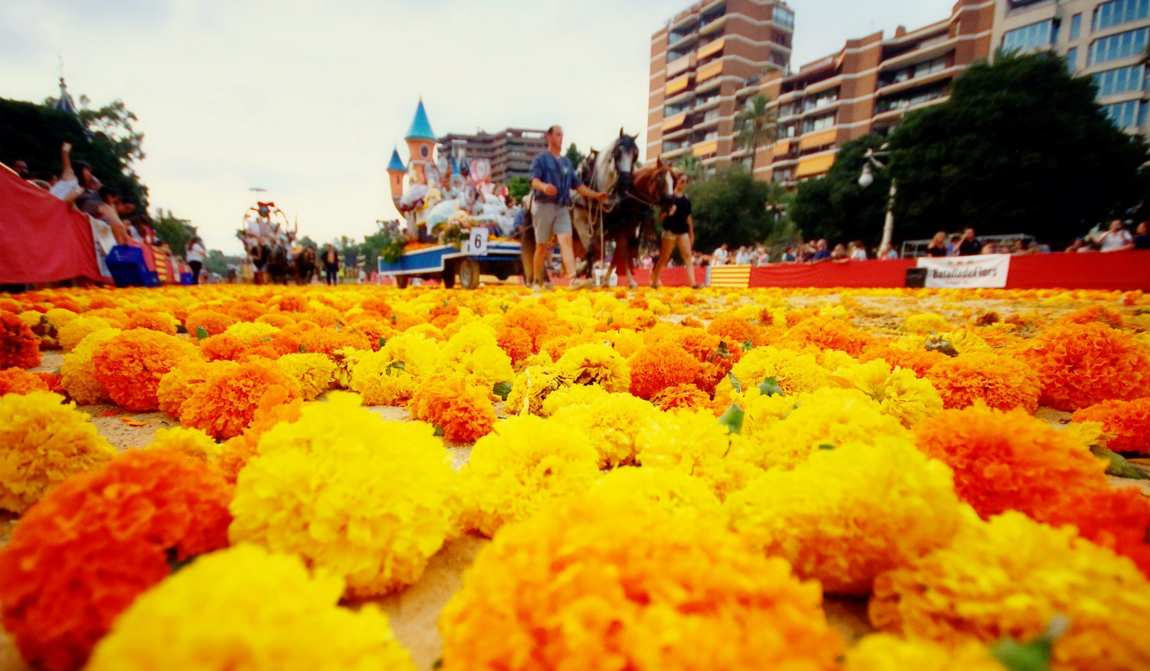
In Andalusia, the Fiesta Virgen del Carmen, the day of Our Lady of Carmen, the patron saint of fishermen and sailors, is a special celebration. A statue of the Virgin Mary is carried onto a ship, and a procession of vessels marches along the coast. This ritual can also be seen in other Spanish autonomous communities.
On 25 July, Girona and Mallorca celebrate St James' Day, and on 28 July, Mallorca celebrates the island's patron saint, St Catalina Thomas. The main action takes place in the evening when decorated chariots drive through the streets of the cities. The biggest celebration is usually organised in Valldemos.
Cost of vacation
Prices in Spain in July correspond to the "high season" concept. The closer to the sea, the more expensive the hotel is; the more tourists are, the higher the price in restaurants and cafes is. But some positions do not depend much on the season, which is pleasing.
Airfares
Airfares in July are almost the same as in June. Depending on the destination, the price may go up or down by 3-5%. Flights to different airports in Spain cost approximately the same amount. The demand for tickets to seaside regions traditionally remains high until the end of September.
Accommodations
Surprisingly enough, in July, the accommodation cost in major cities can fall by 40-60% compared to the first summer month. On the contrary, hotels in seaside resorts increase their prices by 10-30%. Although even at the height of the high season you can find more favourable offers than at the beginning of summer. In August, hotel prices in big cities will drop slightly, while seaside resorts will continue to rise.
Package Tours
Tours for 3-7 nights in July almost double in price. The price of tour packages for 11-14 nights grows less noticeably — their price increases by 20-30% from the June price. In August, the cost of tour packages will remain the same or decrease by 3-5%. At the same time, short tours (up to 3 nights) often increase in price by 15-17%.
Food
How do you find a cheap cafe with quality food in peak season? The main way is to go where Spaniards eat lunch and dinner. Popular local dishes cost 8-10€ in such places, while a tourist restaurant will ask for 20-25€ for the same meal.
Be aware that almost all restaurants close for a siesta at lunchtime. As a rule, restaurants are open until 16:00-16:30 and reopen at 20:00-21:00.
Tapas bars that serve more than just alcohol can be a pleasant discovery. For a snack of a sandwich with aromatic cheese and jamon, you can look into charcuterie — such shops are often found in the markets.
Reviews of holidays in Spain in July always sound enthusiastic about fruit prices. In mid-summer, falling prices for apricots, peaches, and nectarines — you can buy a kilo for 2€. Watermelons and melons have become cheaper, up to 0.5€ per kilo. Figs cost about 4€ per 1kg.
Shopping
Good news for those who do not return from holiday without shopping: sales begin on the 1st of July in Spain. Prices will drop significantly only closer to autumn. In the middle of summer, you can buy products from Spanish brands (Desigual, Zara, Mango, etc.) and world-famous manufacturers at a 10-50% discount.
Recommendation for a trip with children
July in Spanish resorts is a time of heat and aggressive sun, which should be considered when planning a trip. If you still dream of a holiday in Spain in July with children, ensure it is safe.
- For daytime walks, you will need light clothing, covering the body from the sun, and a hat, cap or sun hat.
- Sunscreen should be chosen depending on the skin type and age of the child; the recommended SPF level is at least 30. The cream is water-resistant and should protect from rays type A and B (UVA, UVB).
- Avoid being in the open sun from 11:00 to 16:00 and on holiday with kids - from 10:00 to 17:00.
- For all recreational activities, prefer those where you don't have to be in the open for long periods.
- Try to minimise disruption of the usual routine and food to make it easier for the child to adapt to the new place.
- Do not forget about drinking.
The only unresolved question still needs to be solved is how to choose a hotel for a family holiday. Kidpassage has gathered a collection of the best family hotels in Spain: on our website, you will find verified information about the condition of rooms, food, and services for children. Travel with pleasure and without worries!






